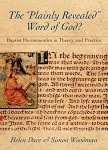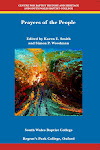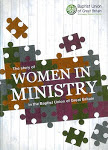A Sermon for Bloomsbury Central Baptist Church
28 January 2024
Mark 5.21-43
The #MeToo movement,
an awareness movement around the issue of sexual harassment
and sexual abuse of women in the workplace,
grew to prominence in 2017
in response to news reports of sexual abuse
by American film producer Harvey Weinstein. [1]
And whilst it has done much good in raising awareness and giving voice to survivors,
and has led to sweeping cultural and workplace changes,
I’m afraid we’re a long way from a world
where such behaviours have been banished to history.
Donald Trump, after all, is on record
for saying that if a man has enough power,
he can do what he wants with a woman,
groping and sexually assaulting without consent. [2]
As the stories of #MeToo have emerged,
it is clear that such behaviour is rife,
and that there is something deeply wrong
with our society’s construction of what it means to be male and female
which has normalised assault.
The rise of Incel culture, with its horrific misogyny,
continues seemingly unabated,
and the arrest last year of Andrew Tate has done little to stem the tide. [3]
And my concern is that changing the law, or arresting the ringleaders,
won’t solve the problem.
What is needed is a new construction, or possibly a deconstruction, of masculinity,
which offers men a better way of being themselves.
In Grayson Perry’s book, ‘The Descent of Man’,
he critiques what he calls ‘The Department of Masculinity’
which tells men what they must be like in order to be real men.
He observes,
‘On average, two women a week in England and Wales
are killed by a violent partner or ex-partner.
This constitutes nearly 40 per cent of all female homicide victims.’ [4]
And goes on to add:
‘Violence is not something young men just learn in gangs, or even in school;
at a deep level they learn it at home.
Governments agonize over housing estates scarred by crime, football hooliganism,
city centres blighted by alcohol-fuelled violence.
They put in schemes to lessen binge-drinking
or fund safe houses for ex-gang members,
while all the time little boys learn that violence is a way of solving problems.
Every time they are slapped, intimidated or humiliated as a child,
every time they see their father throwing his weight around,
every time they succeed in getting what they want by force
they are learning to be violent.’ [5]
And what I noticed, as I was reading through our passage for this morning,
was quite how touch-heavy the narrative is.
The woman is healed through touch,
the crowd are pressing round Jesus and touching him,
he takes the girl’s hand to raise her from death.
And, as we shall discover, the first century Jewish world
had very strong laws about who could touch whom, and when;
and in the course of today’s passage,
Jesus breaks most of those rules.
So as we spend time with these stories of two women
and their encounters with Jesus,
my invitation is for us to hold in our minds,
the tension between touch, and law, and masculinity.
Jeffrey John observes that Jesus had
a ‘startlingly inclusive’ attitude to women throughout the gospels,
regularly acting in ways that equalised their power with men.
This counter-cultural behaviour was almost unheard of in the first century
where women were regarded as second- or third- rate citizens.
And the story of the haemorrhaging woman,
which sits as the a kind of filler in the sandwich
of the story of the raising of Jairus’ daughter,
takes us right to the heart of the issue
of the purity legislation that dominated Jewish society in this period.
We’ve seen over the last few weeks
that Jesus keeps opposing the purity rules
which declared some people clean, and other unclean.
So he casts out an unclean spirit from a man in the synagogue, (1.23-27)
and a whole legion of them from a man living among the tombs (5.1-20)
he heals one man rendered unclean by his skin condition,
and another rendered unclean by his physical impairment.
And in today’s passage, Jesus stops healing men,
and starts healing women.
And whilst I wouldn’t want to make too much of this,
I think that there is something significant in the observation,
that if we are to address violence by men against women,
our starting point might need to be with men,
because it is them who need to change.
Having challenged his society’s shortcomings
in terms of its construction of masculinity,
with its coded divisions of ‘in’ and ‘out’,
where powerful male scribes got to write the rules and enforce them,
while those who couldn’t or didn’t fit were excluded and scapegoated;
Jesus now turns to the women
who, time after time, generation after generation,
are required to bear the psychological and physical scars
of dysfunctional masculinity.
And so we meet the haemorrhaging woman,
and we have to start speaking about things that might make us feel awkward.
It is interesting for me to observe that, as a man,
I find it socially uncomfortable to talk in public
about female menstruation.
Somewhere lurking deep inside me
is the child who attended an all-boys grammar school
and was told by other boys that girls were ‘dirty’,
whilst also discovering that they were the object of my sexual desire.
The Bible, by contrast, is not so reticent,
and as we read it,
we discover that we are in fact not so far from the world of the first century,
and that our taboos about power, gender, and the functioning of the human body,
are every bit as dysfunctional
as those that were operative in the crowd around Jesus.
In a first century Jewish context, menstruation was seen as God’s curse on Eve,
based on a particular reading of Genesis 3.16.
This meant that a woman on her period
was deemed unclean by the Levitical law code,
not only for the time of the period itself,
but also for an additional seven days afterwards.
This meant that for two weeks out of each month,
women were excluded from public worship.
and had to live with restricted engagement in normal social life,
because of the rules around proxy contamination,
whereby if they touched something, such as a pot or a chair,
that thing was then unclean
and would make anyone else who touched it also unclean.
In this context, it is surely highly significant,
that the woman rendered unclean
by an uncontrolled flow of menstrual blood
should find a path to healing through touch,
something which had been denied her for twelve years.
So, what are we to make of this strange idea
that when the woman touched Jesus,
he felt the power go out of him and into her,
in a way that brought about her healing?
I mean, it all sounds a bit Sci-Fi!
If you’ve seen the Star Wars film, The Rise of Skywalker,
there are a couple of examples in there
where someone who is ‘strong in the force’
transfers some of their life energy to someone who is dying,
healing their wounds and bringing them back from the point of death.
In this classic Sci-Fi trope,
for which I could have given many other examples,
the person laying their hands on the sick or injured character
always feels a sense of pain or dangerous weakness
as they give up their power to save another.
So, is this what’s going on here?
Well, partly, yes it is!
There is nothing new under the sun,
and the idea of the powerful healer
is as old as humanity.
But in the case of Jesus and the haemorrhaging woman
there is another layer of meaning
that Mark offers to us, for us to unpack.
Everything this woman has touched, for the last 12 years,
has been rendered unclean;
from people, to pots and pans,
and this has been the source of her isolation and distress.
And yet, when she reaches out to touch Jesus,
the flow of uncleanness is stemmed,
both in her body and in her interactions with another.
For the first time in 12 years, the flow has gone the other way.
Rather than her touch making others unclean,
the touch of another has made her clean.
The taboo that has condemned this woman to a life as an outcast
is broken as she touches Jesus
and discovers not legalistic exclusion,
but relationship and welcome.
And lest we think that we are so far removed
from this strange world of menstrual taboo and touch-contamination,
some of us will remember the great taboo
that surrounded the early years of the AIDS epidemic.
Myths abounded that you could be contaminated by touch,
and others called AIDS God’s curse on gay men.
In 1987 Princess Diana famously opened the UKs first purpose built HIV/Aids unit
that exclusively cared for patients infected with the virus,
at London Middlesex Hospital.
In front of the world's media,
Princess Diana shook the hand of a man suffering with the illness,
and did so without gloves,
publicly challenging the notion that HIV/Aids
was passed from person to person by touch. [6]
It is not an understatement to say that this single act of touching
changed the public perception of those suffering with HIV/AIDS.
Taboos about touch are also at the heart of the story
of the healing of Jairus’ daughter.
It’s not without significance that she is said to be twelve years old (5.42).
Not only does the length of her life match
the period of suffering of the haemorrhaging woman,
further tying the two stories together,
but also it meant that in Jewish society of that time
she was of marriageable age.
A rabbi like Jesus could play innocently with a child,
and we have stories elsewhere of Jesus opening his arms
to welcome the little children;
but Jairus’ daughter was already a woman according to first-century society,
and so for Jesus to take her hand
was a huge breach of the rules
that governed social interaction between men and women.
But of course, her being a woman was nowhere near as problematic,
from a purity-law perspective,
as was the fact that she was dead!
It might have been inappropriate for a rabbi to touch a woman,
but it was absolutely forbidden for him to touch a dead body!
This was far worse than his physical contact with the haemorrhaging woman!
And it takes us into one of the deep underlying themes of the gospel of Mark,
which is that Jesus consistently acts in ways that explode taboos.
From breaking prohibitions on touch,
to casting out spirits of uncleanness,
to disregarding Sabbath laws,
to defeating the great final taboo of death itself.
There is, it seems, nowhere that Jesus won’t go
in his mission to bring good news
to people enslaved and diminished by the narratives
of exclusion and uncleanness
that dominated every aspect of his society.
The ultimate demonstration of Jesus’ challenge
to the great taboo of death comes, of course,
at the end of the gospel,
in the story of the cross and the empty tomb.
But here, much earlier in the story,
we are shown that Jesus is willing to break all the rules
if the end result is the gift of life.
Of course, Jairus’ daughter, like Lazarus in John’s gospel,
is raised to life rather than resurrected to eternal life;
one day they will both die again
and their experiences of life eternal
will be of the same quality as that experienced by any of us.
The point here is not, so much, that the girl is raised from the dead;
as it is that Jesus brings life and healing and wholeness
by wilfully going and doing
what no other rabbi would or could.
It’s worth us thinking for a minute here
about the role of ‘faith’ in these two healings.
As Jesus sends the woman away in peace,
he tells her that it is her faith that has made her well;
and Jesus says to Jairus,
when the news comes that his daughter has died,
that he should not fear, but only have faith
- it’s the same word.
So are we back again in the world of magical healing?
Where some mechanistic relationship
between a person of power and a person of faith
unlocks physical healing?
Or is something else going on?
Well, as I said earlier, partly the answer is that yes, this is exactly the world we’re in;
or at least, it was the world Mark was writing his gospel in!
The ancient world was full of stories of miraculous power,
and we certainly get echoes of these
in the way the stories of Jesus are told by the gospel writers.
For example, it is only a chapter later (6.56)
that we hear of people in the crowd around Jesus
being healed by touching the hem of his cloak;
and in the book of Acts there are stories of people being healed
as Peter’s shadow fell on them (Acts 5.15),
or by touching Paul’s handkerchiefs or aprons (Acts 19.12).
So we are right to be suspicious of such stories
as they circulated around Jesus
and filtered the way the gospel writers recorded his ministry.
But does this mean we can dismiss them entirely?
I don’t think so.
After all, Mark tells these stories this way for a reason,
and his intent is far more significant
than simply wanting to assert that Jesus can do ‘healing magic’
just as well as any other faith healer.
Jeffrey John points to the fact that in classical Greek
the word for ‘heal’ is the same as the word for ‘save’. [7]
So when Jesus says to the haemorrhaging woman that her faith has healed her,
he is also saying that her faith has saved her.
For her, salvation and healing are the same thing,
and the key to both is faith.
What’s going on here?
It’s surely significant that Jesus calls her ‘daughter’ (5.34) rather than ‘woman’.
She is no longer a stranger to him,
she is part of his new family of faith.
And here we are back at the taboos of faith that Jesus is overturning.
This isn’t a story to show that healing is triggered by faith,
if only you have enough of it.
Rather, this story is told to demonstrate
that the faith which Jesus draws from people
is a faith that breaks down barriers of exclusion,
to include the unclean and declare them clean;
thereby bringing the healing of salvation
to those who have previously been denied it.
The haemorrhaging woman is the one person
in the whole crowd around Jesus
who, in faith, is able to access his true power.
It is only the victim of 12 years’ exclusion
who can see Jesus with the eyes of faith.
It is the ritual and economic outcast from society
who has the faith to step into the new way of being human
that Jesus is embodying and inaugurating,
where there are no constraints on compassion,
and the excluded are welcomed as members of the family.
For her, stepping out of the crowd was an act of faith,
defying the conspiracy of conventions
that would have kept her the perpetually silenced victim.
This, for her, was a step of faith
matched by those any age, including our own,
who have taken a step forward
to hold their world to account for its victimisation
of them and their kind.
And what she encounters in Jesus
is a different kind of masculinity
to the toxic hatred of the purity religionists.
Those who would perpetuate the abusive system,
and then blame her for its existence,
are challenged when Jesus meets her faith and courage
with a healing of both body and soul.
What she discovered was that the step out of the conspiracy of violence
was the step of healing.
As one commentator puts it,
‘inside the conspiracy [of masculine violence],
the woman is constantly covered in blood;
when she leaves it, the bleeding stops.’ [8]
And here’s the thing.
The new humanity that is coming into being in Christ
is the place where the bleeding stops.
Faith in Jesus is a step away from a world
dominated by violence, scapegoating, bloodshed,
oppression, discrimination,
separation, and toxic masculinity,
into the new world that is dawning
where the death-defeating, resurrecting,
inclusive, peaceful love of God for all people
brings healing and salvation.
It is a matter of great shame that Christian congregations
have themselves become bastions of exclusion and segregation,
from the denial of ordination to women and those who are LGBTQI,
to the scriptural justification of gender stereotypes
that distort men and oppress women,
to the collusion with society in the scapegoating of others
on the grounds of socio-economic standing, ethnicity,
or other innate characteristics.
The current hostility towards those who are Transgender
both in society and in church life
is a particularly invidious manifestation of this trend.
And, echoing the message of the #MeToo movement,
this has to stop.
Congregations like Bloomsbury are, or at least should be,
on the front line of bringing the new world into being,
through our courageous enacting of the faith
that highlights oppression
and brings salvation and healing to each of us, whoever we are.
I need this, and you need this,
because we each of us carry within ourselves
both the legacy of, and capacity for, oppression.
And each of us needs to take the step of faith,
to reach out and touch Jesus,
to challenge the taboos that keep us from wholeness,
and to receive the healing, loving, renewing, refreshing power
that flows from our saviour to our souls.
Our Church vision statement sets out our purpose
as that of, ‘Provoking faith in the heart of London’,
and if we are to fulfil this vision,
we will need to step into the faith
that brings healing to both us and to others.
[1] https://www.britannica.com/topic/Me-Too-movement
[2] https://www.theguardian.com/us-news/2016/oct/07/donald-trump-leaked-recording-women
[3] https://www.bbc.co.uk/news/uk-64125045
[4] Perry, Grayson. The Descent of Man (p. 77).
[5] Perry, Grayson. The Descent of Man (p. 77).
[6] https://www.bbc.co.uk/news/av/magazine-39490507/how-princess-diana-changed-attitudes-to-aids
[7] Jeffrey John, The Meaning in the Miracles
[8] Robert Hammerton Kelley, The Gospel and the Sacred, p.95














